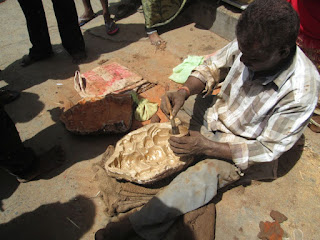Ganesh Chaturthi is a day on which Lord Ganesha makes his presence known on earth for all his devotees; the day is also termed as, Vinayaka Chaturthi, (it is not the birthday of Lord Ganesha!).
Ganesha or Ganapati is an extremely popular God. One of his many names is Vigneswara, the destroyer of obstacles. He is often worshipped for success in undertakings and for the gift of greater intelligence. This is a very auspicious day celebrated to pray to Him so that every new activity started is successfully completed without obstacles. Ganesha is the God of education, knowledge, wisdom, literature and the fine arts.
The date of Ganesh Chaturthi falls on the fourth day of the waxing moon period (Shukla Chaturthi) in the month of Bhadrapada (i.e. August or September). This year the date of Ganesha Chaturthi is Monday, September 5, 2016. The festival is usually celebrated for 11 days, with Ananta Chaturdasi taking place on the last day.
Ananta Chaturdasi
Ananta Chaturdasi is believed to be the day when Lord Vishnu appeared in the form of Anantapadmanabha, the Ananta Sayana form of Lord Vishnu in which he is reclining on Ananta.
 |
| Reclining form of Lord Vishnu |
This Ganesha festival is celebrated at home, work and in public. At all these celebrations images are installed and worshipped. At the end of the Festival, the idols are taken in ceremony and then immersed in a well, pond, lake or the sea.
***************
Legends of Lord Ganesha
One version of a legend relating to the source of Ganesha’s elephant head goes that at the behest of the Gods, who needed a deity able to remove obstacles from their path of action, Shiva himself was born from Parvati's womb, under the form of Gajanana.
According to the Linga-Purana, Ganesha was created by Shiva in order to triumph over the enemies of Gods and the image of a child was born from Shiva’s mind which had the head of an elephant. Looking at the child, Parvati took him on her lap and made the vow that any undertaking, would not be successful unless Ganesha be first worshipped. Shiva declared the child to be Ganapati, Lord of the Ganas (celestial hosts).
In the Varaha-Purana, Ganesha is depicted as a young man originating from the glittering forehead of Shiva absorbed in deep meditation. Parvati was disappointed that the boy was born without her intervention. So, she wished that his head become the head of an elephant. When she saw the elephant-headed child, she loved him immediately, and declared that any human or divine undertaking, should not be successful unless Ganesha be worshipped first.
 |
| Lord Ganesha |
Another Puranic legend tells that Parvati longed for a child and informed Shiva about her desire. He requested she observe a one-year penance. Thus, the Sage Sanatkumara submitted Parvati to various tests in order to ascertain the force of Her will. Eventually a glorious child was born and the Gods and nine Planets (Navagrahas) went to Mount Kailash to admire him. One of the Planets, Shani (Saturn) would not raise his eyes to look at the child. Parvati requested him to view and admire the baby. When Shani raised his eyes and looked at the child, the baby's head instantaneously separated from the body.
In response Vishnu left on his vahana Garuda to search for a new head to replace the lost one. On the banks of the Pushpabhadra River, he met a herd of sleeping elephants. Choosing a resting animal, whose head was turned northwards, he cut if off and brought it back. According to a version of this legend, this elephant was actually a Gandharva who desired to obtain liberation from his terrestrial life.
On Vishnu’s return, the elephant head was attached to the child and Vishnu gave him the following eight names: Vighneshvara, Ganesha, Heramba, Gajanana, Lambodara, Ekadanta, Soorpakarna and Vinayaka.
***************
Tiruvannamala begins its Preparations
 |
| Many Ganeshas created for the Festival |
 |
| This Ganesha looks very jaunty! |
 |
| A whole army of Ganeshas with lots of help to give! |
 |
| Umbrellas for Ganesha idols for home and office |
 |
| Families purchasing their idol for home worship |
 |
| Lord Ganesha's favourite Wood Apple for sale |
 |
| Fruit Sellers on Car Street near Arunachaleswarar Temple |


















































